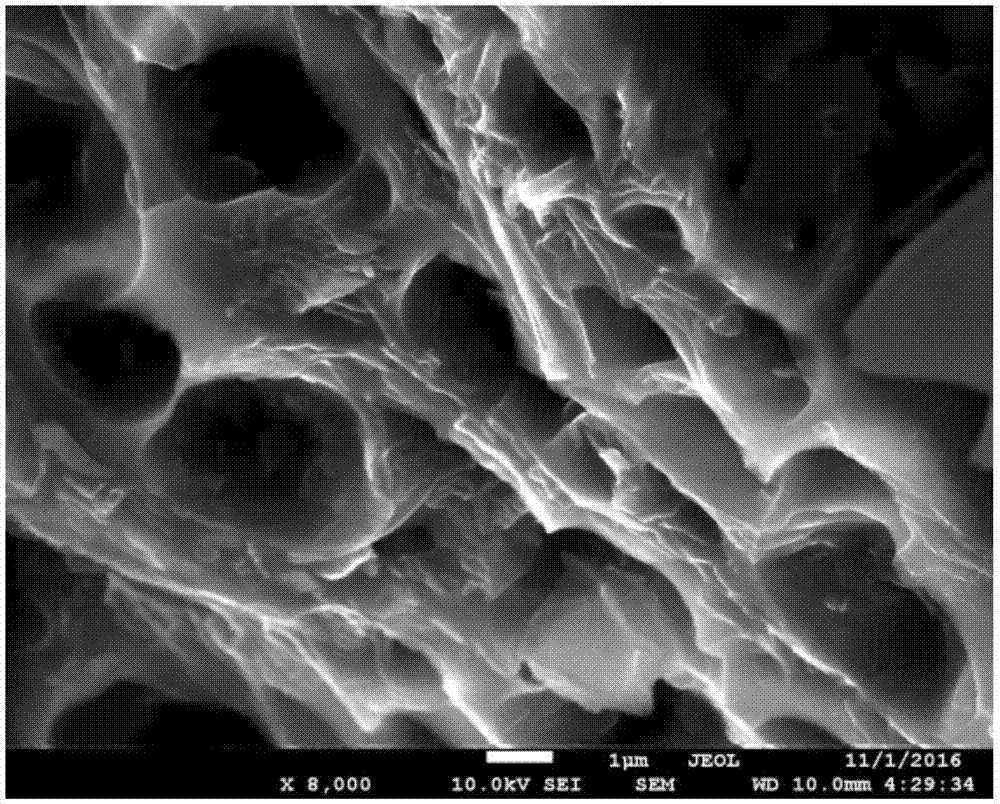Fluorescence sensor for rapid detection of explosives and preparation method thereof, and method for rapid detection of explosives
A fluorescent sensor, explosives technology, applied in the field of explosives detection
- Summary
- Abstract
- Description
- Claims
- Application Information
AI Technical Summary
Problems solved by technology
Method used
Image
Examples
preparation example Construction
[0070] The preparation method of above-mentioned polymer, comprises the following steps:
[0071] 1) In zinc powder, TiCl 4 Under the condition of existence, dissolve 4,4'-dibromobenzophenone and compound 1 in a solvent for reflux reaction, separate and purify to obtain compound 2; the structural formulas of compound 1 and compound 2 are as follows:
[0072]
[0073] Compound 1;
[0074]
[0075] Compound 2;
[0076] 2) In the presence of an alkaline substance and a palladium catalyst, compound 2 and pinacol borate were added to a solvent for reaction, and separation and purification were performed to obtain compound 3; the structural formula of compound 3 was as follows:
[0077]
[0078] 3) In the presence of an alkaline substance and a palladium catalyst, add 3,6-dibromocarbazole and compound 3 into a solvent for reaction, separate and purify to obtain a polymer represented by formula I.
[0079] One of the polymers with aggregation-induced luminescent effect ha...
Embodiment 1
[0103] The fluorescent sensor used for rapid detection of explosives in this embodiment is made of a graphene composite material dissolved in a solvent with a concentration of 1 × 10 -5 mol / L solution; the graphene composite material includes graphene and polymer P1, and polymer P1 modifies graphene in a non-covalent bond form. The solvent is a mixed solvent formed by mixing water and tetrahydrofuran; the volume percentage of tetrahydrofuran in the mixed solvent is 10%.
[0104] The preparation method of the fluorescent sensor for rapid detection of explosives of the present embodiment comprises the following steps:
[0105] 1) Preparation of graphene composite material:
[0106] a) Take 10 mg of graphene oxide (GO), add it into THF (10 mL), and ultrasonically disperse it for 20 min to obtain a graphene oxide dispersion;
[0107] Take polymer P1 (100mg), and dissolve it in THF (20mL) to obtain a polymer solution;
[0108] b) The graphene oxide dispersion obtained in step a)...
Embodiment 2
[0112] The fluorescent sensor used for rapid detection of explosives in this embodiment is made of a graphene composite material dissolved in a solvent with a concentration of 1 × 10 -6mol / L solution; the graphene composite material includes graphene and polymer P2, and polymer P2 modifies graphene in a non-covalent bond form. The solvent is a mixed solvent formed by mixing water and tetrahydrofuran; the volume percentage of tetrahydrofuran in the mixed solvent is 5%.
[0113] The preparation method of the fluorescent sensor for rapid detection of explosives of the present embodiment comprises the following steps:
[0114] 1) Preparation of graphene composite material:
[0115] a) Take 5mg graphene oxide (GO), add it in THF (50mL), and ultrasonically disperse it for 40min to obtain a graphene oxide dispersion;
[0116] Take polymer P2 (25mg), and dissolve it in THF (5mL) to obtain a polymer solution;
[0117] b) The graphene oxide dispersion obtained in step a) is added dro...
PUM
 Login to View More
Login to View More Abstract
Description
Claims
Application Information
 Login to View More
Login to View More - R&D
- Intellectual Property
- Life Sciences
- Materials
- Tech Scout
- Unparalleled Data Quality
- Higher Quality Content
- 60% Fewer Hallucinations
Browse by: Latest US Patents, China's latest patents, Technical Efficacy Thesaurus, Application Domain, Technology Topic, Popular Technical Reports.
© 2025 PatSnap. All rights reserved.Legal|Privacy policy|Modern Slavery Act Transparency Statement|Sitemap|About US| Contact US: help@patsnap.com



